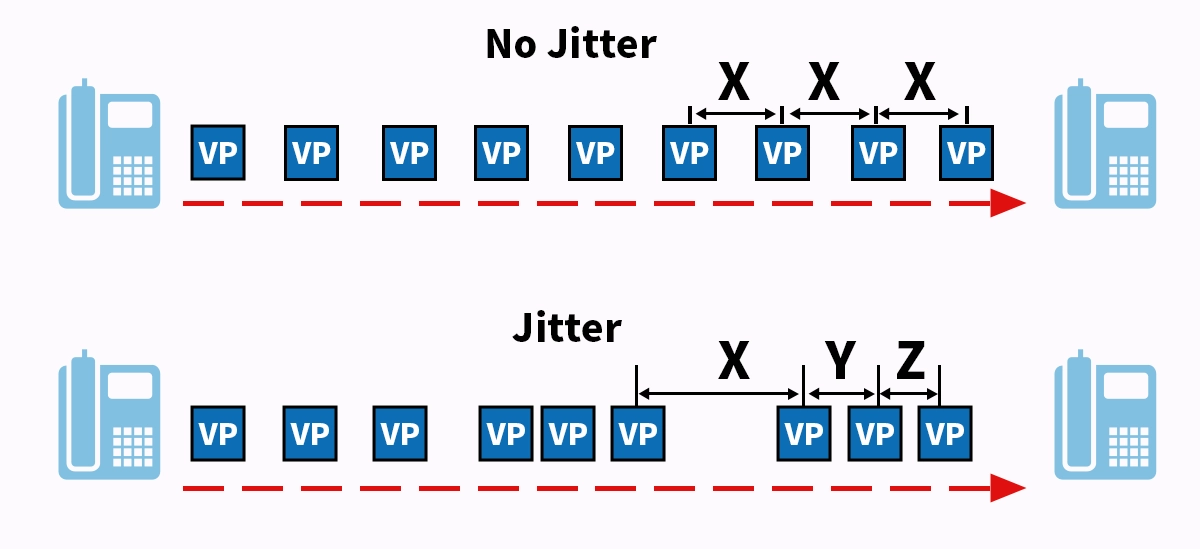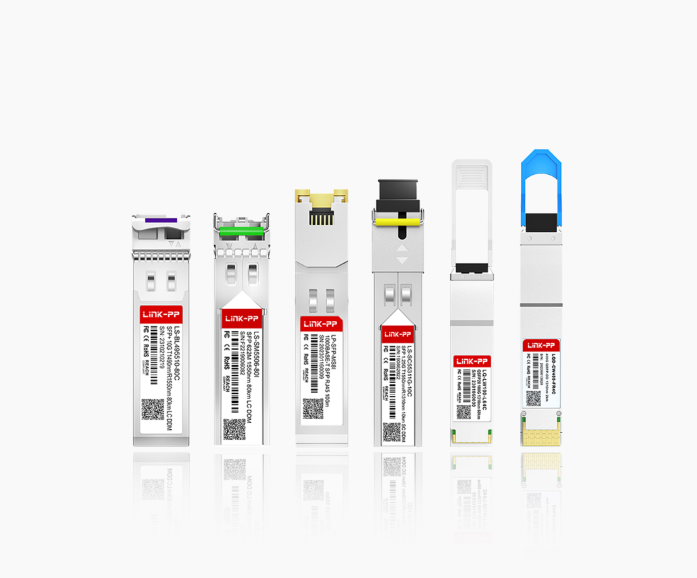
In the high-speed world of optical communication, data travels at the speed of light. But what happens when this flawless stream of photons encounters a subtle, yet critical, imperfection? This imperfection is known as jitter, and it's one of the most significant factors determining the performance and reliability of your network.
Simply put, jitter is the deviation in the timing of a signal's edges from their ideal positions. Imagine a perfectly metronomic drummer suddenly speeding up and slowing down erratically—the music becomes distorted. Similarly, jitter distorts the digital "rhythm" of your data, leading to errors and potential system failure.
In this article, we'll demystify jitter, explore its root causes, classify its types, and provide actionable strategies for mitigation. Understanding how to reduce jitter in optical networks is crucial for anyone designing, managing, or relying on high-speed data infrastructure.
🚀 What Exactly is Jitter? The "When" Matters More Than the "What"
In digital signals, information is decoded at specific, predetermined intervals. The receiver samples the signal, expecting a '1' or a '0' at a precise moment. Jitter introduces uncertainty into this timing. A rising edge that arrives too early or too late can cause the receiver to sample the wrong value, resulting in a Bit Error Rate (BER).
Jitter is typically measured in Unit Intervals (UI) or picoseconds (ps). One UI is the time period of a single bit. For a 10Gbps signal, 1 UI is 100 picoseconds. Even a few picoseconds of jitter can be catastrophic at multi-gigabit data rates.
🚀 The Usual Suspects: Common Sources of Jitter in Optical Links
Jitter doesn't appear out of nowhere. It's generated by various components and phenomena within a communication system:
❌ Random Jitter (RJ): Caused by random, unpredictable noise sources like thermal noise and shot noise in optical components and electronics. It is unbounded and follows a Gaussian distribution.
📊 Deterministic Jitter (DJ): This is predictable and has a specific cause. It can be further broken down as shown in the table below.
The table below summarizes the primary components of Deterministic Jitter:
Jitter Type | Abbreviation | Primary Cause | Characteristics |
|---|---|---|---|
Data-Dependent Jitter | DDJ | Inter-symbol interference (ISI), bandwidth limitations of the fiber and transceiver. | Pattern-dependent; linked to the sequence of '1's and '0's. |
Periodic Jitter | PJ | Power supply noise, crosstalk from adjacent channels, or clock source imperfections. | Repetitive, sinusoidal timing variations. |
Bounded Uncorrelated Jitter | BUJ | Crosstalk from other data streams that are not correlated with the main signal. | Unpredictable but has a finite peak-to-peak value. |
Understanding the different types of jitter and their root causes is the first step toward effective mitigation. A robust system design must account for both the random and deterministic components.
🚀 Why Should You Care? The Real-World Impact of Jitter
Uncontrolled jitter directly translates to network performance degradation. The consequences include:
Increased Bit Error Rate (BER): This is the most direct impact. As jitter increases, the "eye" in an eye diagram closes, making it harder for the receiver to correctly distinguish bits.
System Instability: Intermittent link failures and "flapping" connections can often be traced back to marginal jitter tolerance.
Reduced Operational Reach: A link that works perfectly at 1 km might fail at 10 km due to jitter accumulation over the fiber.
Protocol Compliance Failures: Standards like Ethernet, Fibre Channel, and OTN have strict jitter generation and tolerance masks. Exceeding these limits means your equipment is not interoperable.
For network engineers, managing jitter tolerance in high-speed transceivers is non-negotiable for maintaining a healthy and scalable network.

🚀 The Heart of the Link: How Optical Transceivers Influence Jitter
The optical transceiver is a critical hub for jitter generation and management. Every component inside a transceiver can contribute to the total jitter budget:
Laser Driver & Modulator: Imperfections in driving the laser can introduce timing skew and pattern-dependent jitter.
Photo Detector & Amplifier (TIA): On the receive end, the conversion of light back to an electrical signal is susceptible to noise, generating random jitter.
CDR Circuits (Clock and Data Recovery): This is the transceiver's "jitter filter." A high-quality CDR cleans up the incoming signal by extracting a clean clock and retiming the data, effectively reducing input jitter.
Choosing transceivers with superior components and robust CDR circuitry is paramount. This is where the importance of high-quality, compliant optical modules becomes evident.
For applications demanding uncompromising signal integrity, the LINK-PP PSM4-100G-LR4 transceiver is engineered for exceptionally low jitter generation. Its advanced CDR and high-linear optics ensure your 100G links remain stable and error-free, even over long distances, directly addressing challenges like jitter in 100G optical networks.
🚀 Conclusion: Jitter Management is Synonymous with Network Excellence
Jitter is an inevitable part of high-speed optical communication, but it is not an unconquerable one. By understanding its nature, sourcing quality components like those from LINK-PP, and adhering to sound engineering principles, you can ensure your data streams remain clear, accurate, and reliable.
Ready to eliminate jitter from your critical optical links?
Explore the full portfolio of high-performance, low-jitter LINK-PP optical transceivers and speak with our technical experts to find the perfect solution for your application's stringent demands. Visit our website [link-pp.com] or contact us today for a consultation!
🚀 FAQ
What is the main cause of jitter in optics?
You often see jitter when parts of your optical system move quickly. This movement can come from shaking, vibrations, or changes in the environment. Even small, fast motions can create jitter.
What does jitter do to your images or data?
Jitter can blur your images or make them look shaky. You may also find errors in your data. Jitter makes your system less reliable and can lower the quality of your results.
What tools can you use to measure jitter?
You can use high-speed cameras, vibration sensors, or oscilloscopes. These tools help you see fast movements or timing changes in your system. Each tool checks a different part of your setup.
What steps help you reduce jitter in your optical system?
You can use strong mounts, vibration pads, or signal filters. These steps keep your system steady and lower unwanted movement or noise. Good design and regular checks also help.
What types of optical systems are most affected by jitter?
You see jitter most in cameras, telescopes, fiber optic links, and laser tools. Systems that need high accuracy or clear images can have the most trouble with jitter.




